5 Innovative Mobile Marketing Tactics to Adopt Today
Research shows that in recent years the percentage of mobile internet traffic has been growing significantly all over the world. This trend is only...
I know what I am looking for, and would like to chat.
A team of data-driven marketers obsessed with generating revenue for our clients.
Because the proof is in the pudding.
At Campaign Creators we live by three principles: Autonomy, Mastery, Purpose.
9 min read
![]() Kara Susvilla
:
03/12/20
Kara Susvilla
:
03/12/20
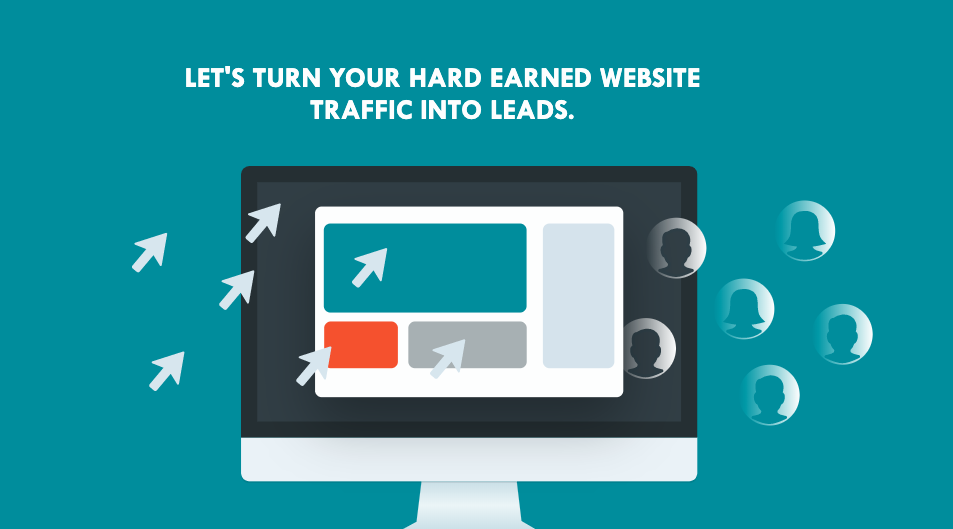
As an eCommerce company, it’s common to only focus on driving traffic to your site, whether that’s with PPC ads, social media, or other available channels. But as far as your business bottom line, how many of those visitors end up making a purchase?
You might think about throwing money at the problem with more retargeting and paid advertising—but there’s a less expensive and more lucrative strategy you should consider instead: eCommerce Lead Generation. Not only can Lead Generation help you increase sales, but it will also help you decrease your customer acquisition cost.
Sure, you might be thinking—isn’t Lead Generation a B2B play? The answer is yes. But it’s also an invaluable tool to add to your eCommerce marketing arsenal. Large or small, your eCommerce business should be developing a lead generation strategy if you want to reach consumers in today’s digital world.
Before we jump into how to incorporate lead generation into your eCommerce marketing, let’s review some terminology (not to mention the copious acronyms!) associated with a broad field like lead generation.
Business-to-consumers; business or transactions conducted directly between a company and its end-user consumers.
Business-to-business; the exchange of products, services or information between businesses.
Also known as electronic commerce, this is the buying and selling of good or services using the internet. Both B2C and B2B industries can be have an eCommerce aspect to their business.
A less invasive marketing strategy that earns the attention of customers through content marketing, search engine optimization, and social media.
The development of relationships with buyers at every stage of the funnel, and through every step of the buyer’s journey. The focus is on continuously providing relevant information and education as a contact needs it.
Ranking prospects on a scale (based on attributes, behaviors, etc.) that represents their perceived value as a lead. The scores are used to prioritize the company’s engagement with the most valuable leads.
The act of subdividing contacts into groups with similar characteristics or interests, who are likely to exhibit similar purchase behavior, in order to efficiently find the right audience for an upcoming marketing campaign.
The process of determining the validity and significance of the leads acquired through lead acquisition in the context of your campaign.
A visualization of a company’s process of generating, qualifying, and closing leads into customers. This consists of a TOFU, MOFU, and BOFU.
The Top-of-Funnel stage. Prospects in this beginning stage are typically trying to solve a problem, and thus want to be educated and acquire relevant information to determine the best solution.
Middle-of-Funnel stage. Offers in this stage are potentially the most important in the funnel, as they distinguish “good fit” leads and begin to pull them in. Prospects have moved on to determining the best solution for their problem, so you can now focus on why your company’s products/services are their best choice.
The Bottom-of-Funnel stage. Prospects at the bottom of the funnel are approaching a purchase decision, so it is at this time that a deal should be closed.
Delivers a message to customers through old-fashioned general advertising and paid programs.
Pay-per-click, an online advertising model in which advertisers pay every time their ads are clicked on by a user.
Return on investment. The results gained from invested resources, typically of a monetary nature.
Call-to-action; a prompt that encourages a lead to move closer towards making a purchase. The words/phrases selected for CTAs are tailored for sales scripts, advertising messages or web pages that encourage consumers to take action.
Customer Relationship Management tools, which use data analysis from numerous communication sources to focus on customer retention and nurturing relationships. HubSpot's CRM software would be an example of this.
A content management system, which allows users to design, publish, and manage website content from a single interface.
Click-through rate; a percentage of how many users click on a link included in a webpage or email, which provides a way of measuring the success of the campaigns.
Search engine optimization, a marketing discipline focused on growing visibility in search engine results. SEO combines technical and creative elements to improve rankings, drive traffic, and optimize search engines recognition.
Let’s start with the basics. A lead is a person in your database who indicates an interest in your company’s product or service by performing a certain behavior. They haven’t purchased your product or service just yet, but an eCommerce lead may have given you their email for a 15% off discount or free product sample.
Marketers in the eCommerce industry often don’t identify contacts in their database as leads, but this is a big mistake. According to Moz, retail sites typically don’t capture leads at the top or middle of the funnel—only once a shopper has checked out do they get added to the list. Historically, the buying cycle has been short enough for eCommerce sites to convert visitors to customers in a single visit. However, today’s consumer behavior has completely changed due to a number of factors we’ll discuss later.
By identifying and capturing leads that haven’t made a purchase yet, you create an opportunity to convince those leads to purchase from you later.
Lead generation is the process of attracting and capturing potential customers (aka your leads) that have shown interest in your company. This is typically done by collecting their email address.
But why email addresses?
For one, email marketing is the most effective way to continue and control conversations. Other marketing platforms, such as Instagram and Google, are becoming more difficult to use as they continue changing their algorithms. Also, email is a dependable marketing channel that isn’t going away any time soon. According to Statista, email usage is predicted to grow by 2-3% each year from 2018 to 2023.
A few ways eCommerce companies implement lead generation into their marketing strategy is by:
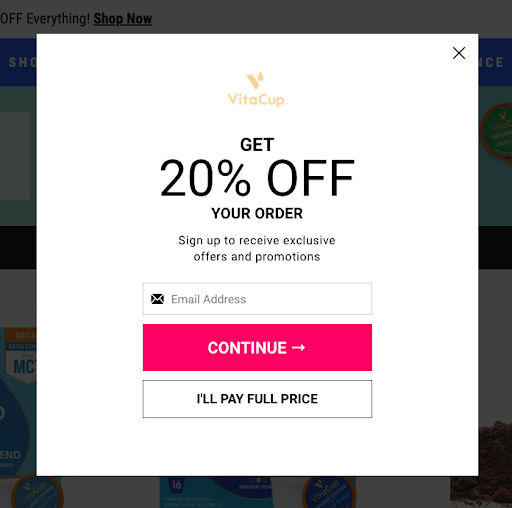 Source: VitaCup
Source: VitaCup
According to BigCommerce, the average eCommerce conversion rate is a mere 2%. This means of all the people who visit your site, about 98% are likely to leave before making a purchase.
If you don’t have any lead generation strategies to capture visitors who aren’t ready to make a purchase, then you may be missing out on hundreds or thousands in sales.
Imagine your average order value (AOV) is $25, and you normally convert 2% of the 1,000 visitors that arrive on your site each day. If you increase the conversions by even 1%, you could increase your sales by a whopping $91,250 per year.
To summarize, here are the three main reasons you need lead generation.
As more competition rises in your industry, the more likely shoppers will choose other brands over yours. By strategically capturing visitors who may not be ready to make a purchase, you’ll be able to continue conversations and have your brand stay top of mind when they are ready to buy.
Shopping behavior has completely changed. Long gone are the days when a shopper looking for new shoes does a quick Google search, clicks on the first listed link, and purchases that exact pair of shoes. Instead, shoppers have more options and online resources to learn more about different products. A shopper today may read hours of product reviews or ask for a friend’s opinion prior to making a purchase decision.
Because most visitors aren’t purchasing on their first visit, lead generation helps you capture and identify valuable contacts that may purchase later.
Many eCommerce companies struggle with rising customer acquisition costs due to online marketing becoming more competitive and expensive. With a proper lead generation strategy in place, you’ll be able to counter rising acquisition costs and still implement a highly effective marketing strategy that drives new customers.
Ultimately, eCommerce companies need to incorporate lead generation if they want to build a sustainable marketing strategy that adapts to today’s consumers.
Lead generation also supports the inbound marketing methodology, also known as modern marketing.
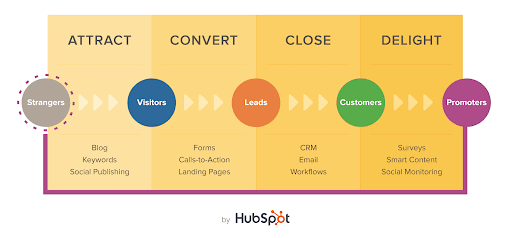 Source: HubSpot
Source: HubSpot
Inbound marketing is a business methodology that attracts customers by creating valuable content and experiences tailored to them. Outbound marketing tends to interrupt your audience with content they’re not interested or ready for. This methodology consists of four main stages: attract, convert, close, and delight.
Lead generation falls in the second stage of inbound marketing—this is the convert stage where visitors are turned into leads. As you can see in the diagram, generating leads is a fundamental step in an individual’s journey to becoming a delighted, repeat customer.
First off, lead qualification is the process of identifying and categorizing the different types of contacts you capture. Not every lead will be ready or interested in purchasing your product, so qualifying your leads will help you understand who to focus your time and energy on.
In lead generation, this typically happens during the initial conversion where additional information is collected to better learn about that lead. For example, an online shoe shop may offer a discount in exchange for filling out a form. This form may ask for their email, as well as their favorite shoe style. By understanding what that new lead is interested in, you will be able to segment and qualify them.
Qualifying a lead can vary depending on the offer. The most common way eCommerce companies qualify leads is by asking questions through forms and quizzes.
For starters, you can begin by uncovering any of these four elements about your new lead:
Uncovering this information about your new lead requires a combination of strategy and creativity. Be mindful that the more valuable the offer, the more information leads are willing to provide.
Let’s take a look at how Warby Parker is able to uncover this information in their frames quiz. This is a great example of how you can capture and qualify a lead in one offer.

Source: Warby Parker
Warby Parker has a number of different products, but they strategically begin the quiz by asking a simple question. This helps qualify a lead’s basic intentions and goals of landing on their site.
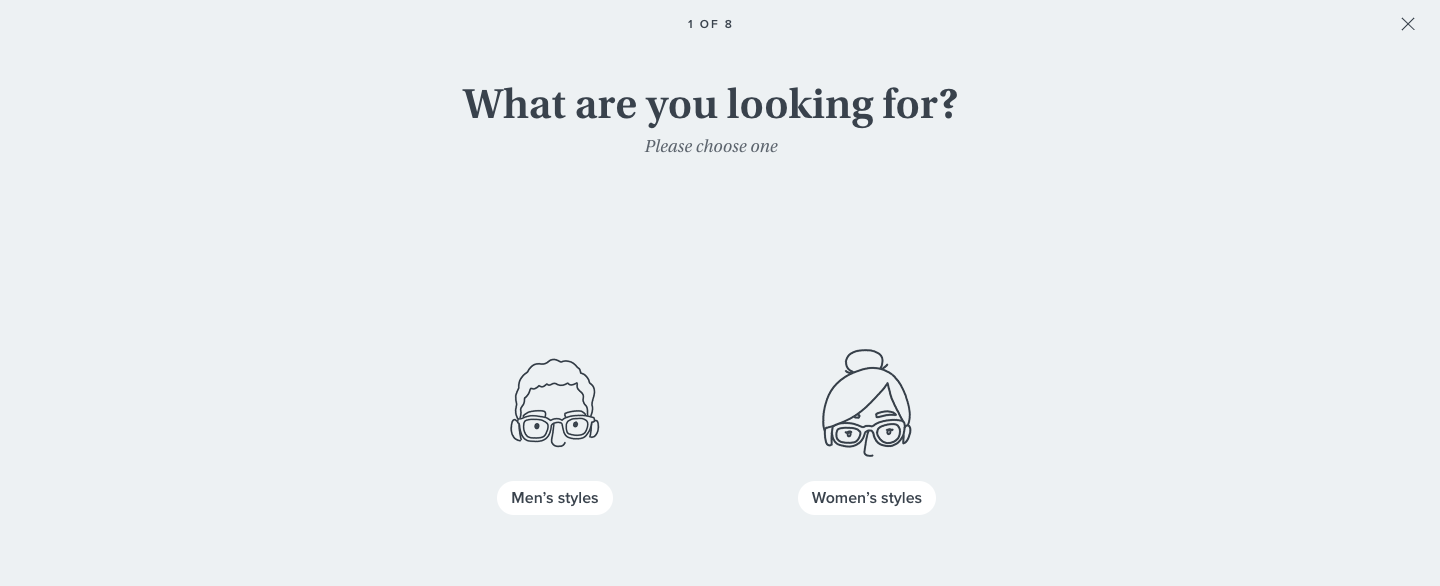
Warby Parker asks this question in order to understand their lead’s experience and knowledge with their product. By knowing this, this can also uncover how far their lead is in their buyer’s journey.
Understanding a lead’s purchase readiness helps with segmenting and identifying those that are likely to purchase sooner rather than later.
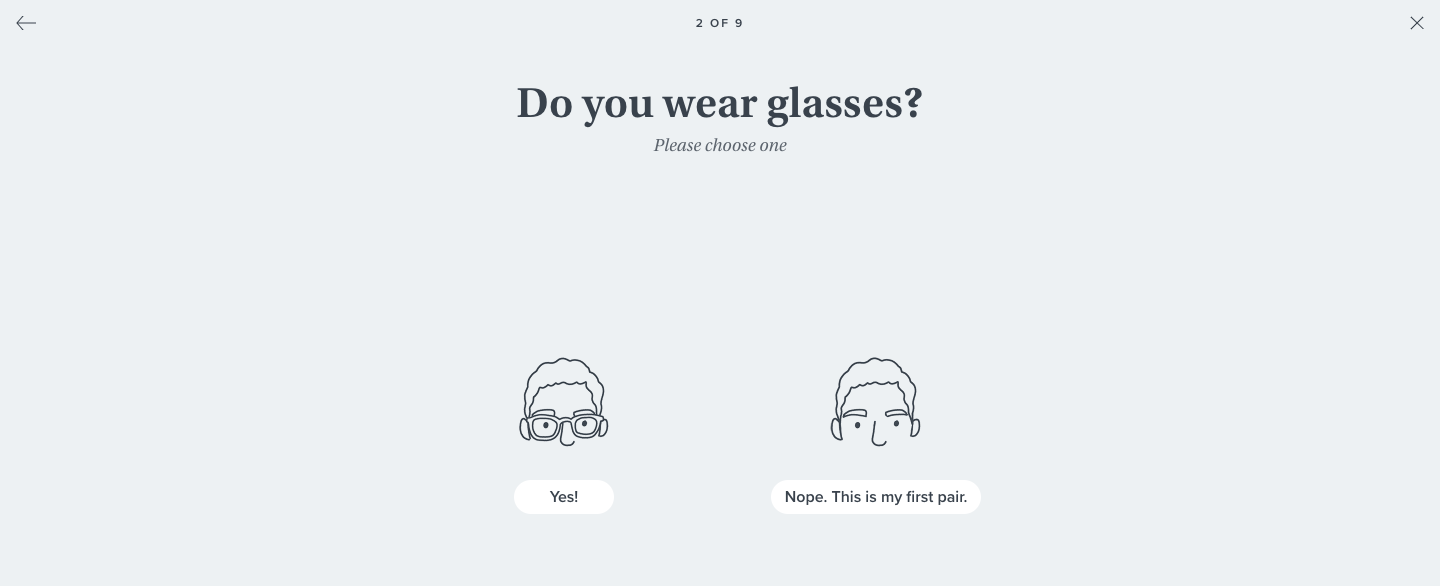
Similar to the first two questions, the answer provided will help you identify and segment your lead. The only difference is that these questions give the user the ability to skip the question if they have no preference. This option should only be provided for questions that would be helpful to know, but are not necessary.
Making these types of questions optional can improve the user’s experience and increase conversions (aka completion of the form) if they can’t give you that information.
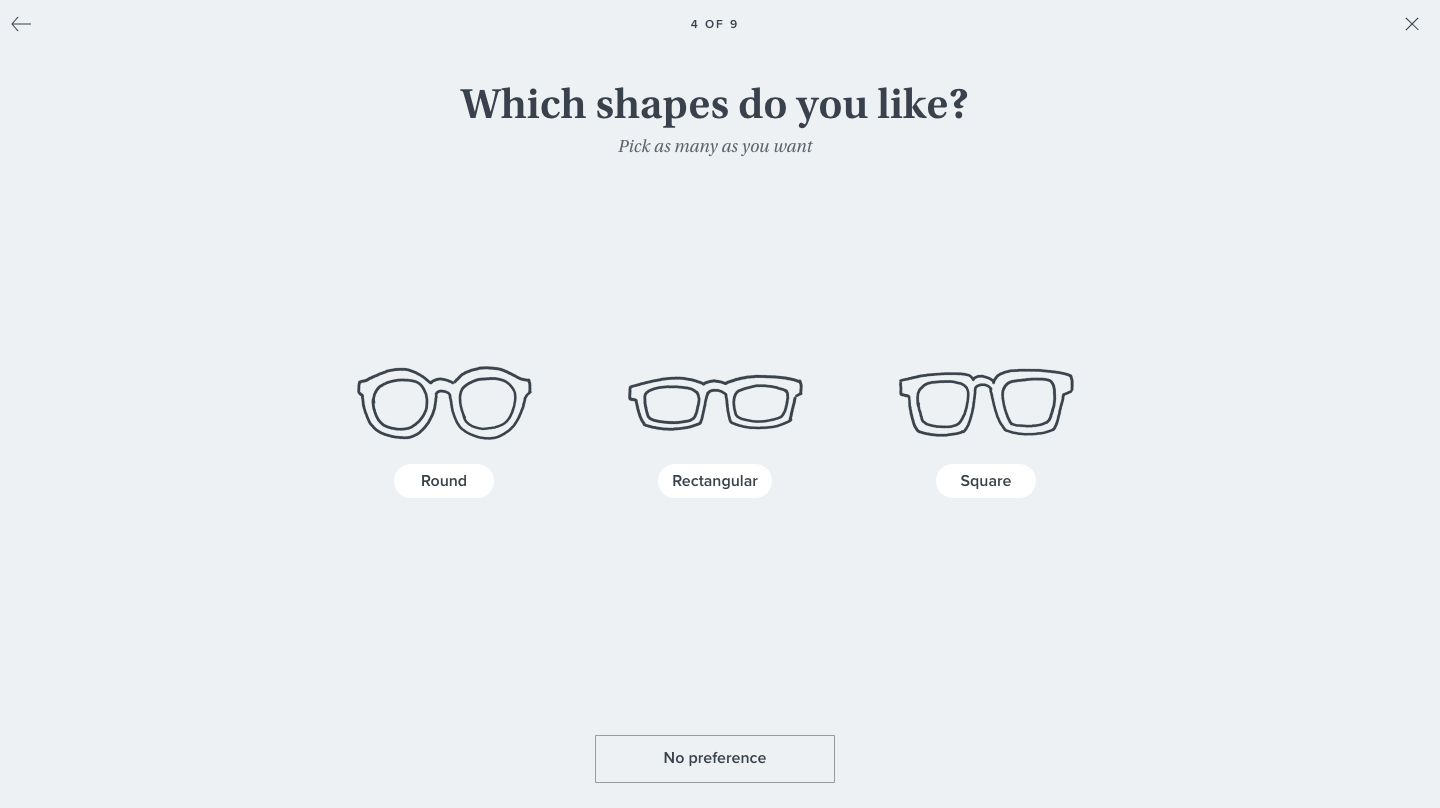
If you have other products or services, this is a great opportunity to identify whether the user is interested or even aware of them. This is essentially an opportunity to cross-sell. Warby Parker is widely known for their eyeglasses, but they use this question to determine if their visitor is interested in sunglasses as well.
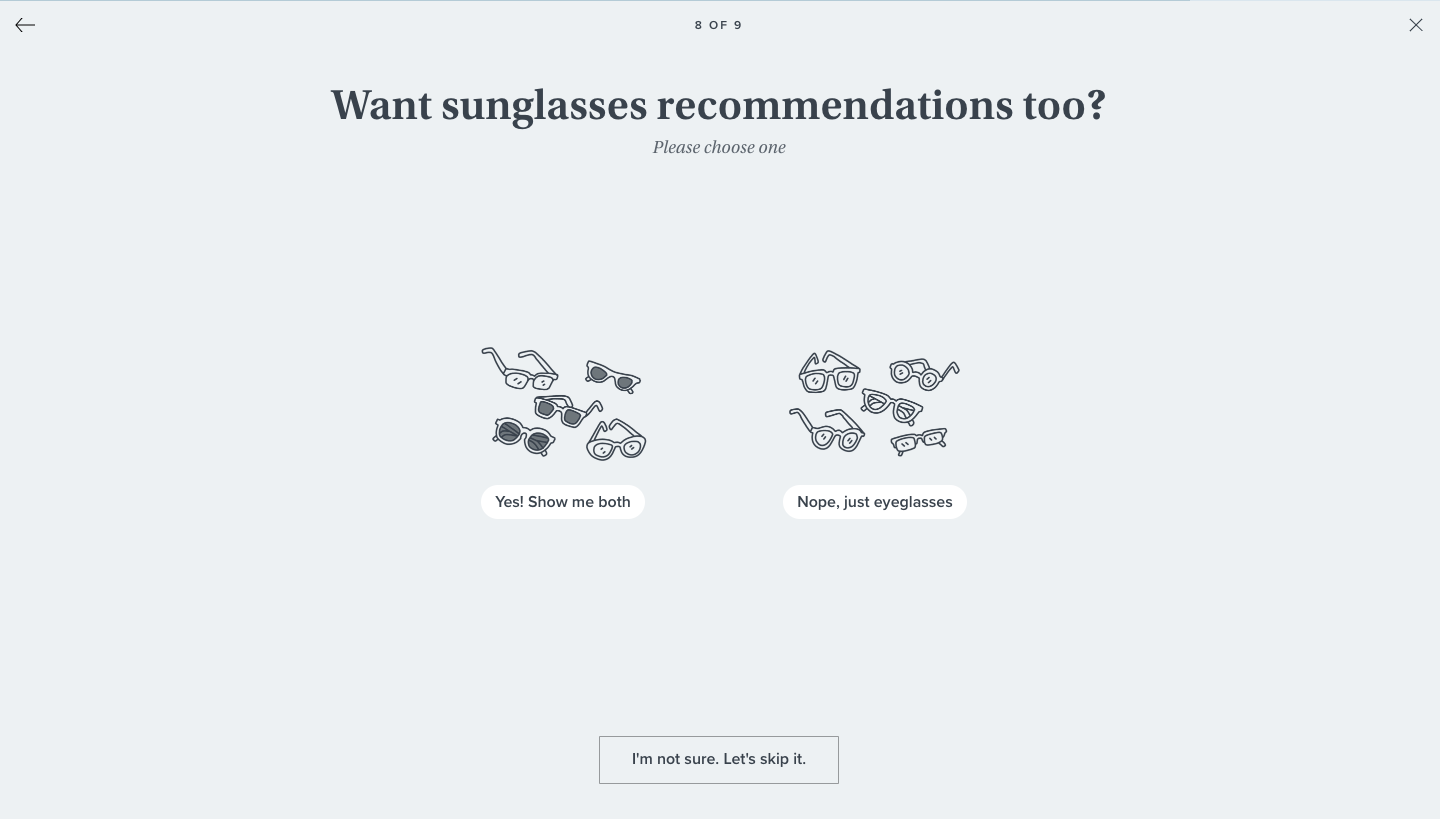
Warby Parker ends the quiz by asking for the participant’s email in order to generate and save the quiz results. Not only did this quiz capture a new lead, but it also discovered a lot of valuable information to help segment and qualify that lead in their database.
Now that you understand the importance of lead generation for eCommerce companies, let’s discuss what this process and campaign looks like.
A lead generation campaign can vary in complexity, however, you can launch a full-functioning campaign with just four components. Let’s cover what each of those elements are and how this fits into the lead generation process.
In order to illustrate the four main components, we’ll use HUM Nutrition’s offer as an example.
Imagine you discover HUM Nutrition’s offer to receive 20% off and to get matched with the right product for you. This offer includes the first essential element, which is a…
A CTA is typically a button or linked message that encourages visitors to take a certain action. This linked CTA then takes that visitor to your…
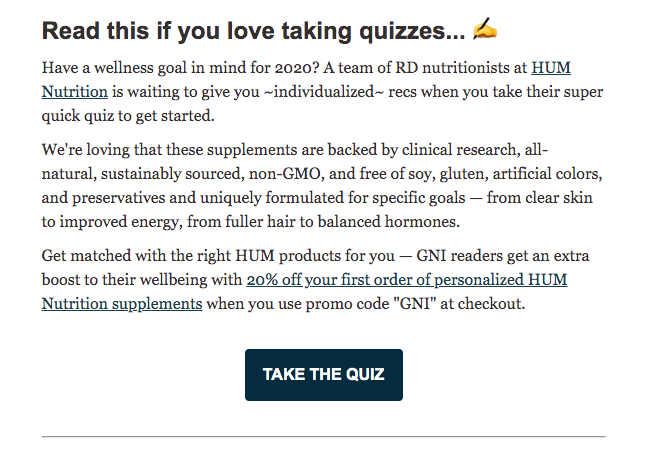
Source: Girls’ Night In
A landing page is a web page a visitor lands on for a distinct purpose. Some eCommerce companies use pop-ups strategically as well that can serve as a landing page. While a landing page or pop-up can be used for various reasons, one of its most frequent uses is to capture leads through a…
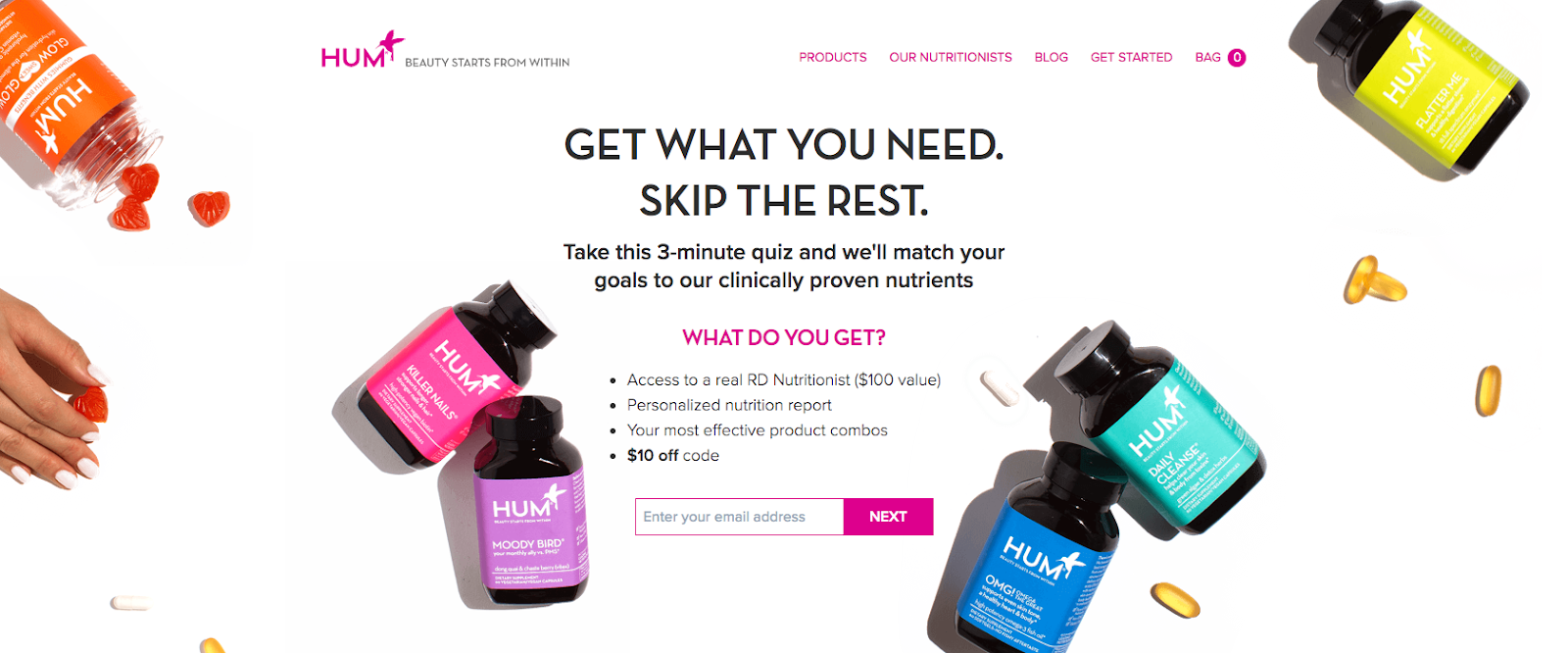
Source: HUM Nutrition
Forms are hosted on landing pages and pop-ups. They consist of at least one email field and can include a series of fields that collect additional information in exchange for an …
An offer is the content or something of value that’s being offered on the landing page. The offer must have enough value to a visitor to merit providing their personal information in exchange for it. In the example above, HUM Nutrition
is providing a personal nutrition report, access to an RD Nutritionist, effective product combinations, and a $10 off coupon code.
After your visitor enters their information and clicks the final submit button on the form, or in this case, enters their email and clicks next, the visitor has successfully become a lead.
Some offers, such as HUM Nutrition’s quiz, may require more information and next steps. If your offer requires asking additional questions, remember that the more questions you ask, the less likely your visitor will complete the process.
HUM Nutrition does a great job by first capturing the visitor’s email before even starting the quiz. If the lead happens to fall off or leave the quiz incomplete, they can still follow-up with that lead because they have their email.
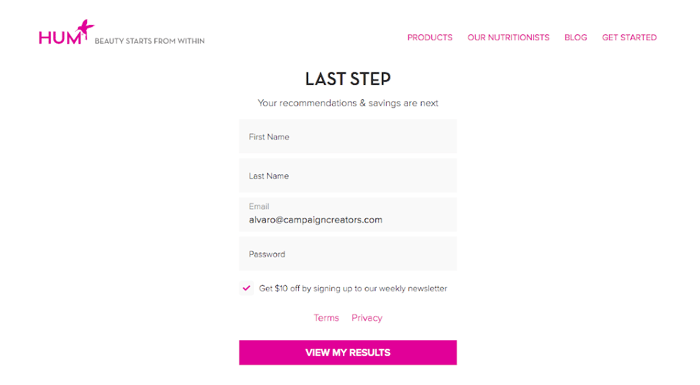
Source: HUM Nutrition
Now that you understand the four main components of turning a visitor into a lead on your landing page, you must be thinking, how do I get visitors to my offer in the first place? This is where promoting your offers on different marketing channels come in.
To learn the six quickest and most effective ways you can start driving traffic to your offers, download our ECommerce Marketing: Introduction to Lead Generation Guide. This includes examples of actual companies promoting their offers through their various channels.
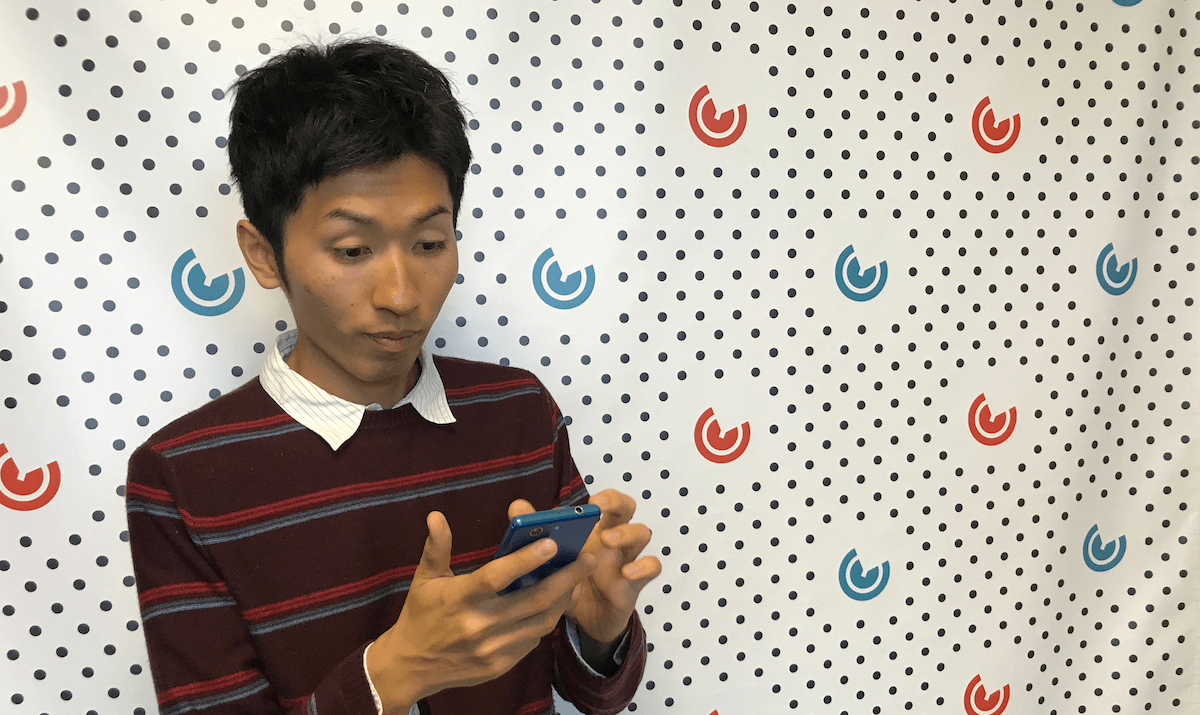
Research shows that in recent years the percentage of mobile internet traffic has been growing significantly all over the world. This trend is only...

What exactly is SEO? You’ve heard the term time and time again, but what does SEO or search engine optimization really do? In short, it’s the...
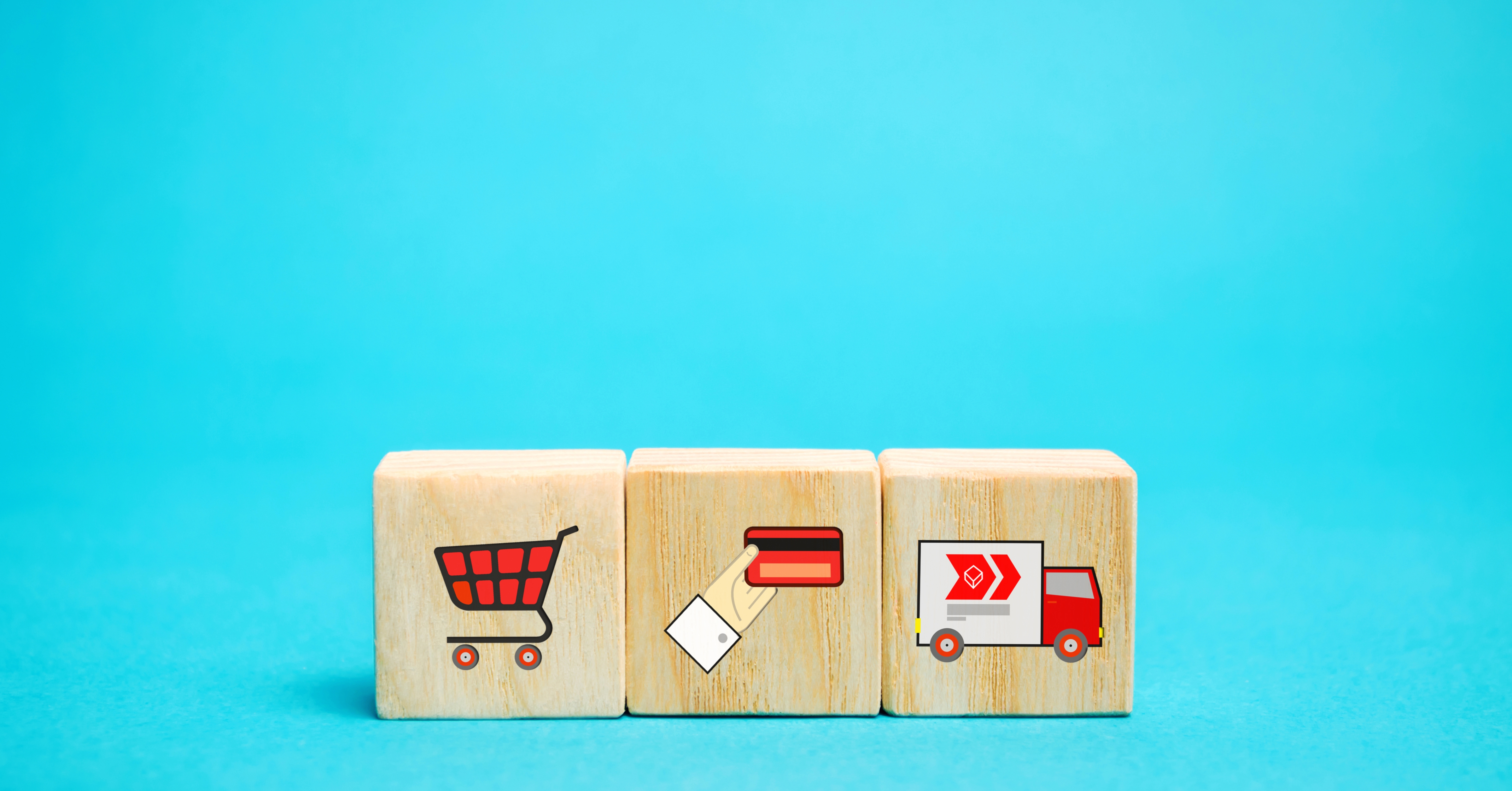
It is a well-known fact that competition within the eCommerce industry is fierce, which is why you might be considering hiring the services of an ...